Lots of pretty pictures in this one!
The thing about imagination is that it’s actually a value-neutral function. According to Merriam-Webster, my favorite dictionary,1 imagination is “the act or power of forming a mental image of something not present to the senses or never before wholly perceived in reality.”2 Perhaps aptly, the English term emerged as the Middle Ages segued into the Early Modern era, derived from a set of French and Latin words having to do with images, concepts, and mental pictures.
In other words (heh), much as some of us creative types valorize the imagination as a universal positive, it is neither. The imaginations of this country’s founders unleashed terror alongside democracy. The 21st-century right dared to imagine, audaciously, and here we are. Trump’s imagination is unparalleled - to the point that he projects it straight onto the world, making the images in his mind real by behaving as if they already are. Elon Musk’s imagination is actually not great: he mostly borrows and steals from other people’s imaginations (see, especially, companies and memes), then uses his imagination to twist his borrowings to no good.
But you know what redeems imagination? This pink poodle made of flowers.
I googled to see if it was the only pink poodle made of flowers ever to emerge from someone’s imagination and I found two others.
This one is from Grace Garden Florals in El Paso:
This one is pressed flower art (hold that thought) from The Pressed Posy, which is also in Texas, Lumberton to be precise:
But how amazing is it that three people have imagined pink poodles made of flowers? that only three people appear to have imagined pink poodles made of flowers? that each of these pink poodles made of flowers is different? The imagination can be turned to good as easily as it can to bad!
I encountered the first pink poodle at the Philadelphia Horticultural3 Society’s 196th annual Philadelphia Flower Show, which I attended last weekend. It is the oldest and best flower show in the country, according to the experts (Romi and Tess), and it’s where I encountered the first pink poodle, as well as:
this incredible arrangement of hanging red flowers, which is the first thing you see when you walk into the main exhibition hall;
this absolutely wild animal tea party situation made of flowers and plants, which deservedly won all the prizes, including Best in Show (which of course makes me think of dogs, but now maybe it will make me think of flowers);
these delightful PRESSED FLOWER youth self-portraits - who even knew this was a thing? I guess horticultural flower show people;
this ikebana (among others), in which imagination follows rules, which can be harder than letting imagination run free;
and all kinds of flowers, plants, and arrangements of all sizes, including this one which looks like it could be in a vase on your dining room table or a planter on your deck, but was nearly twice as tall as we are.
There were flower dioramas (from room-sized to miniature), flower table settings, flower window boxes, flower fashion (hats, shoes, designer lipsticks…all made from flowers and other botanical specimens), interpretive flower arrangements based on paintings, meadows, a full-on Japanese forest with a waterfall, a high school horticulture program’s sustainability garden…I could go on if I remembered them all, but the list of competition categories takes up 20 pages in the Exhibitor’s Guide (many of them are individual plants that primarily require horticultural skill, which boggles my mind as much as, if not more than, horticultural imagination).
I can’t say we loved everything we saw, but there was way more than enough to love. And even the ones we didn’t love impressed us with their imagination. Most of all, every bit of imagination in that enormous exhibition hall was extended for good.
If it sounds like the Philadelphia Flower Show was utopia, well, it sure did feel like it. The crowd was diverse and unendingly pleasant: making way for each other, offering to take photographs of one another, pointing the way to the cocktails, standing politely in lines. The theme was Gardens of Tomorrow and the future looked great: imaginative, sustainable, beautiful, collaborative, inviting of the youth, that is, a lot better than anything we read in the newspaper these days.
I would guess the Philadelphia Horticultural Society has its fair share of gossip, drama, perhaps even scandal. I’m certain it has its fair share of Republicans, perhaps even more than its fair share. But they certainly tuck any and all of that away for the flower show.
In short, the Philadelphia Flower Show was a great break from the world as it is. It was also a great reminder that the world includes the flower show and all it requires and inspires: beauty, vision, community, and, most of all, imagination, which we can still use for good and to imagine a different tomorrow, in our gardens (well, maybe not my garden,4 but yours!) and everywhere else.
Because we still deserve nice things…
If you’re in any proximity to Philadelphia, the flower show is truly the nicest thing I can imagine for you. It’s open through Sunday, and there are cocktails!5
If you’re in New York and into theater, you deserve to see John Proctor Is the Villain, which starts previews March 20. It’s about a high school class reading The Crucible, but that hardly begins to describe its superb excellence. I loathe the current standing-ovation-for-everything theater practice, but I was the first on my feet when I saw this in Boston last year.
On the literary front, I read Curtis Sittenfeld’s new book, Show Don’t Tell: Stories, because I really wanted to know what happened to Lee Fiora, the heroine of her first novel, Prep.6 Hers is the last story in the book, and I read it first. There’s one paragraph that hit me wrong, but aside from that, it’s an impeccably structured story that beautifully SHOWS the ever-hovering gap between how we see ourselves and how others see us as it TELLS Lee’s story over the last 30 years, which is pitch perfect.
Then I went back to the beginning of the book, and about halfway through I realized that Curtis Sittenfeld is the 21st-century John Updike. With impeccable structure and astute observational skill, they both narrate the contemporary experience of a precise slice of American life: white, professional, mildly woke but uneasy about it, mostly suburban, at once family-centered and family-resistant, living successfully in the world while also struggling with how to live.
Updike’s fiction, like Updike, is 20th c., mostly male, mostly New England. Sittenfeld’s fiction, like Sittenfeld, is 21st c., mostly female, mostly Midwest. Their fiction tracks the stages of their lives, from teenagers (“A&P” meet Prep) to old age (Updike) and middle age (current Sittenfeld, who will presumably catch up). Both are excellent at what they do. Way back in the day, we would have called them middlebrow, but fuck elitist literary distinctions and let us enjoy what we enjoy.
Of course, this description may make you think absolutely not, which I fully respect. But if it appeals, I recommend.
This post is for Romi and Tess. If you enjoyed reading it, feel free to like, restack, or share with people you think might also enjoy it. If you have thoughts about imagination, dictionaries, flowers, gardens, flower shows, Curtis Sittenfeld, or anything else, I want to hear them, so please comment.
Yes, I am a person with a favorite dictionary. It used to be American Heritage because that was my first dictionary of my own, a Hanukkah present from parents who appreciated that I was a child who would appreciate a dictionary for Hanukkah. It remained American Heritage for a bit longer than it might have because a subsequent edition had a picture of my sister in it. She was a dancer, and a photographer she knew took the picture to illustrate unitard. When I was first an English grad student and then an English professor, my favorite dictionary was of course the Oxford English. But when the internet took over, I turned to Merriam Webster, and when they became the anti-fascist dictionary of record during Trump I, the relationship was sealed - although I do recommend Collins for English learners or anyone who gets overwhelmed by Merriam Webster (“Your imagination is the ability that you have to form pictures or ideas in your mind of things that are new and exciting, or things that you have not experienced.”).
As a writing teacher, I forbade the use of dictionary definitions in introductions, but writing rules are made to be broken.
I wanted to get cultivating and horticultural into the title of this post, but it got too long and I got worried about the algorithm.
I am a catastrophic gardener with little in the way of imagination or skill, but when I do get something right, like the boxes on my porch railings or the white flowers at the end of my driveway whose name I can never remember, I am so proud of my success that: 1) it’s all worth it, and 2) I never want to change it.
Also flower wreaths, snacks, seed and plant sales, apparently a children’s area though we didn’t make it over there, benches to sit on if you get tired, and so many photo ops. As well as a delightful parade of floral outfits, which only included one of us, who met another person wearing the same thrifted, quilted, floral jacket! The other two of us felt stupid for not thinking to wear floral outfits and will do better next year.
For those of you wondering about my decision to read nonfiction and 19th- and 20th-century novels rather than Big New Books this year: it still holds, but I decided short stories were not big books.

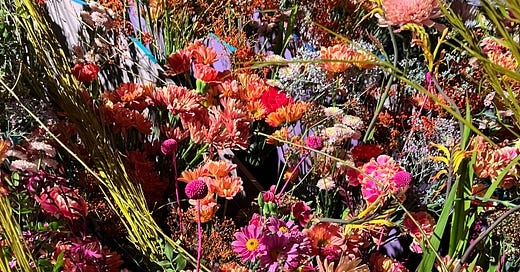



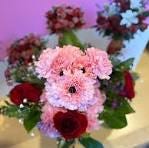
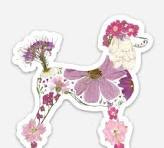
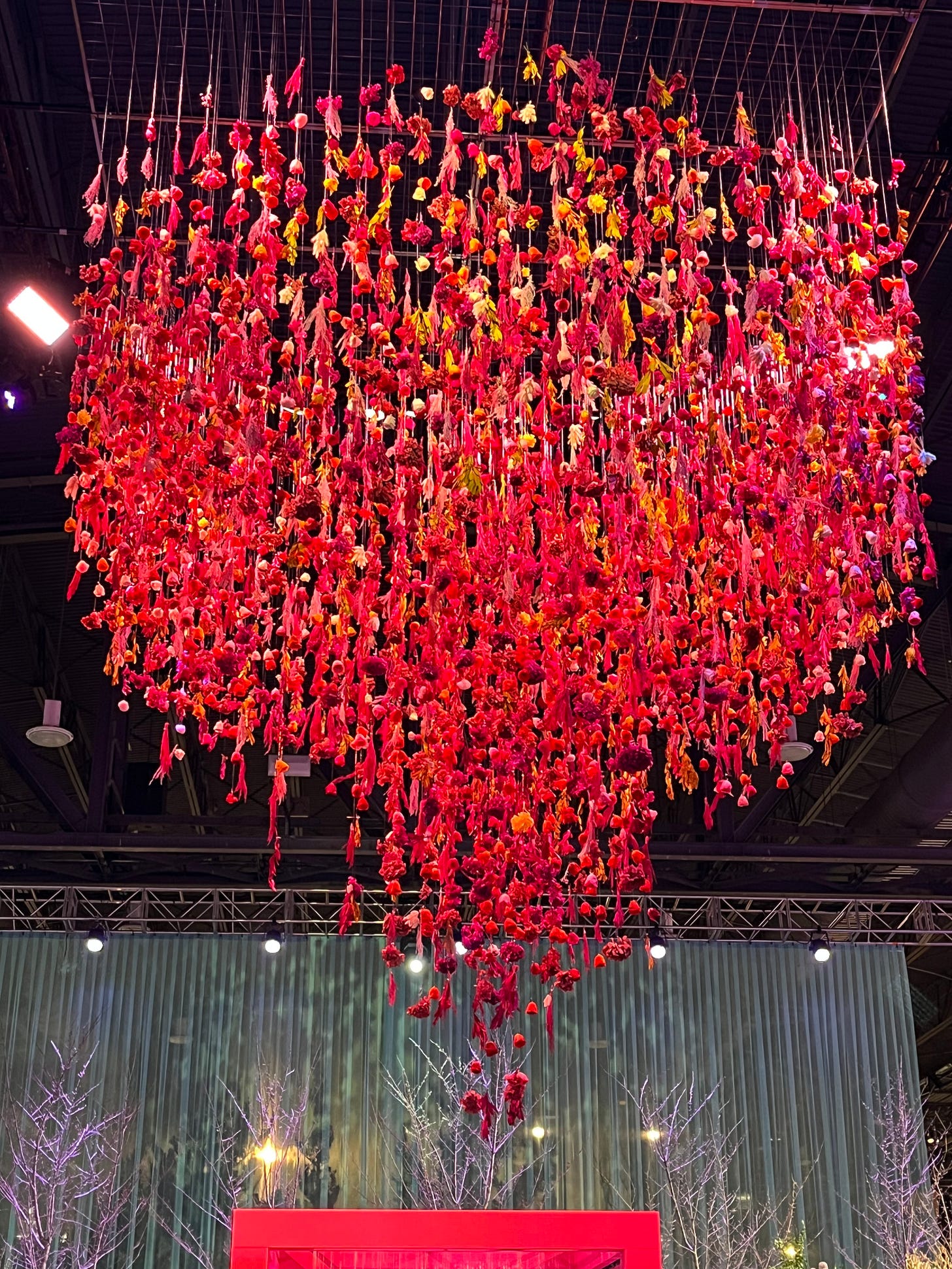

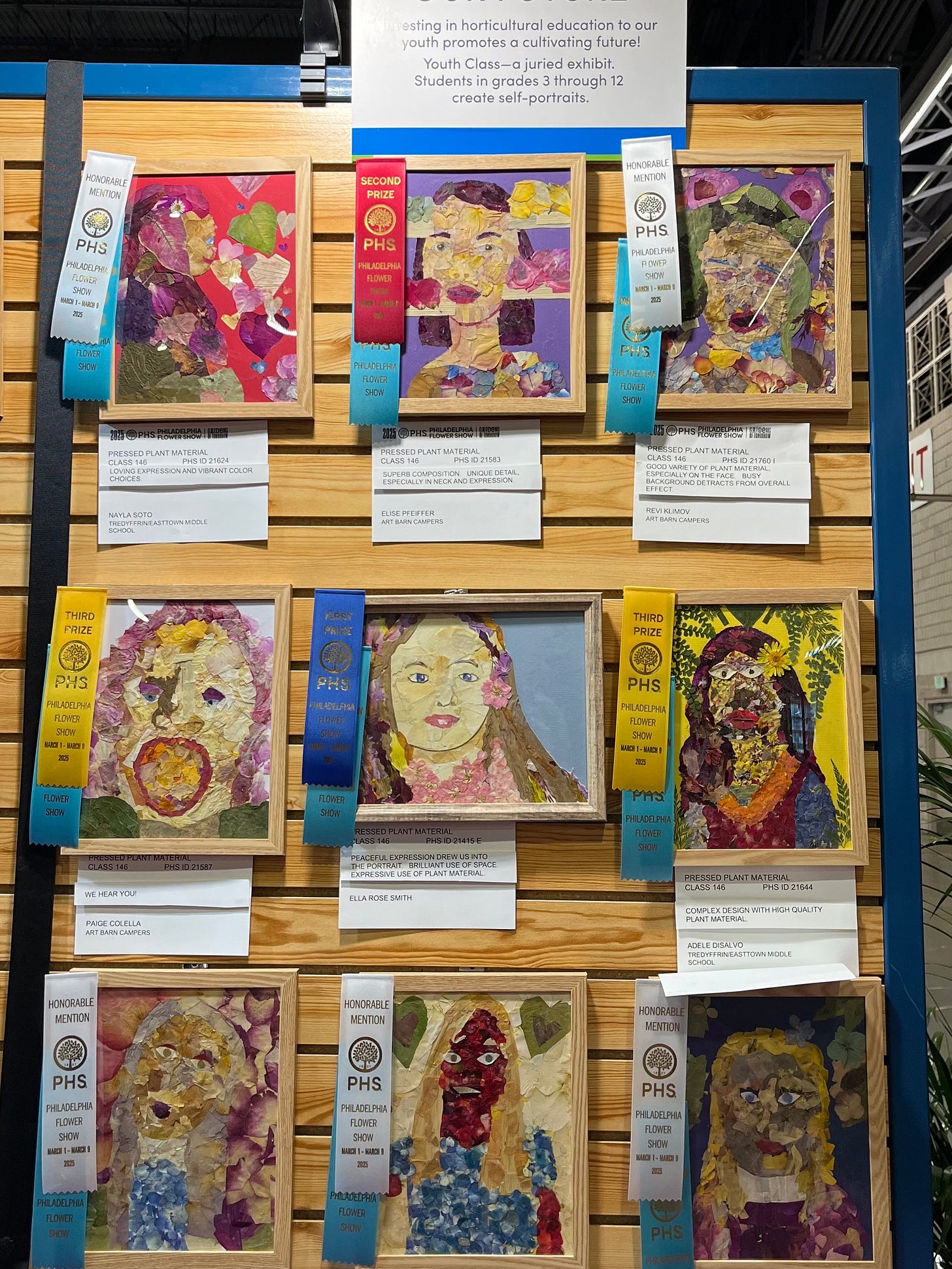
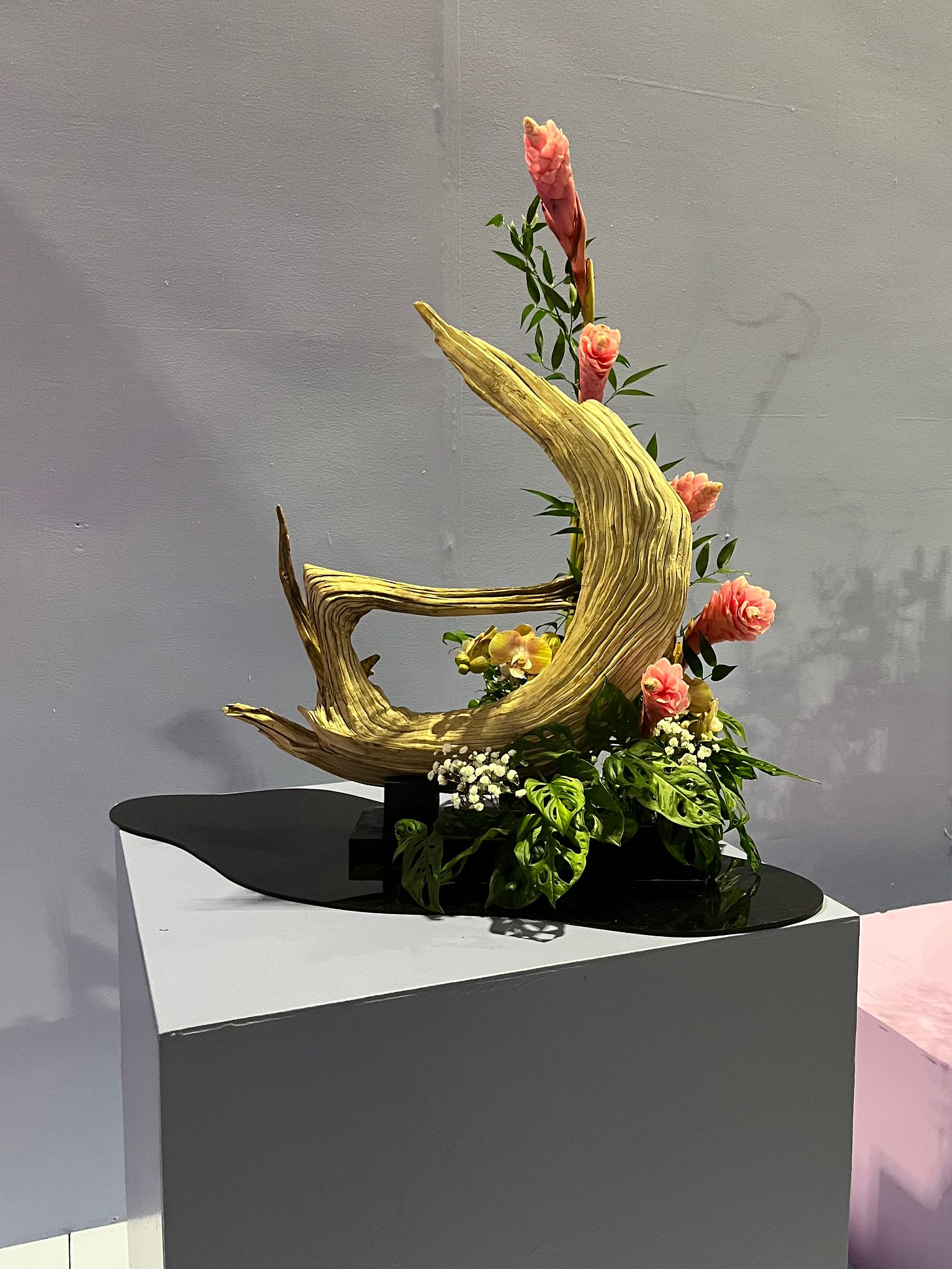
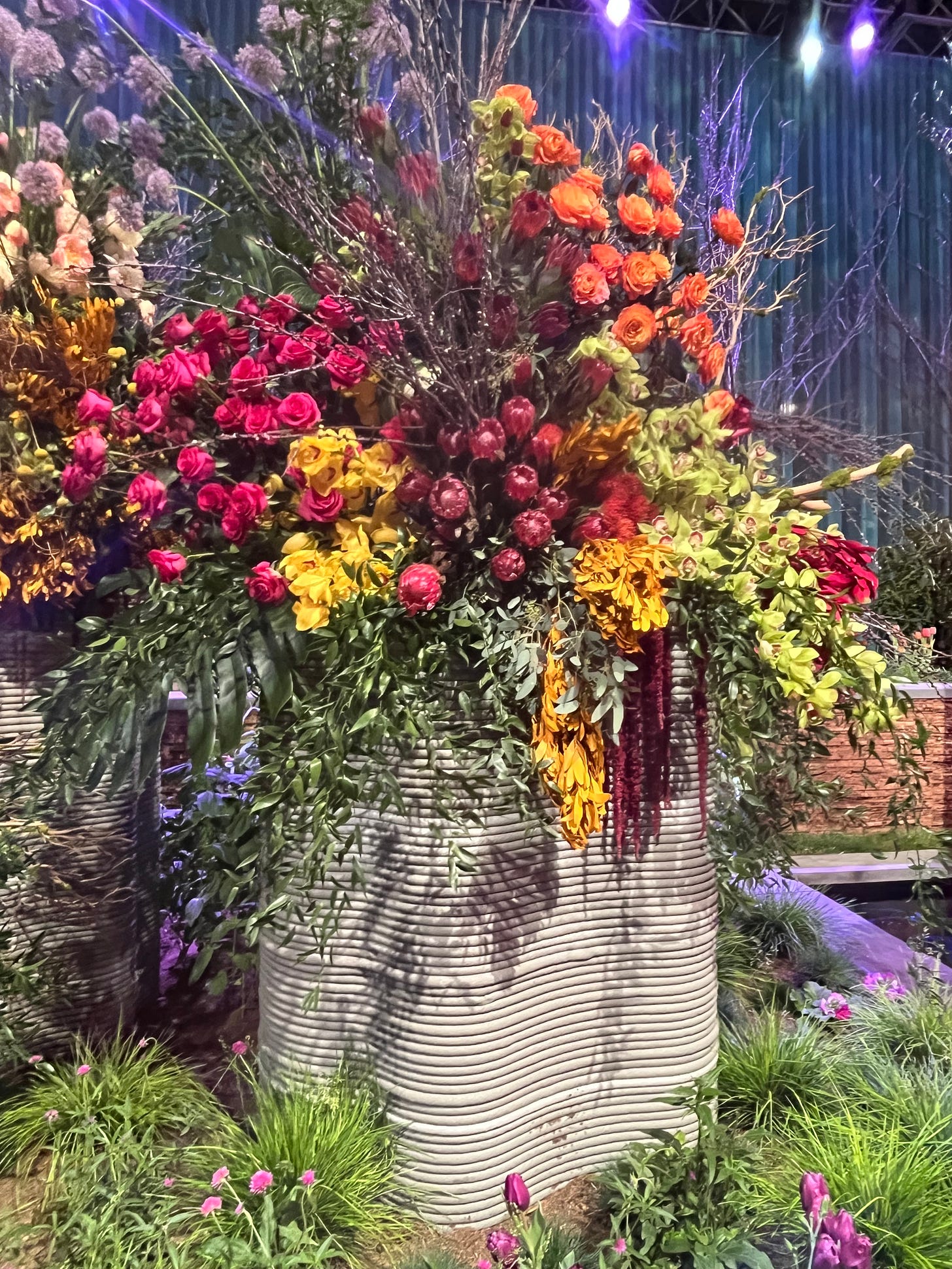
I love love love the Philadelphia flower show (so great that you were there for it) and your photos are so great and capture so much! I was thinking I wanted to read Sittenfeld!
I love the Updike-Sittenfeld comparison!! I thought immediately of “A&P”